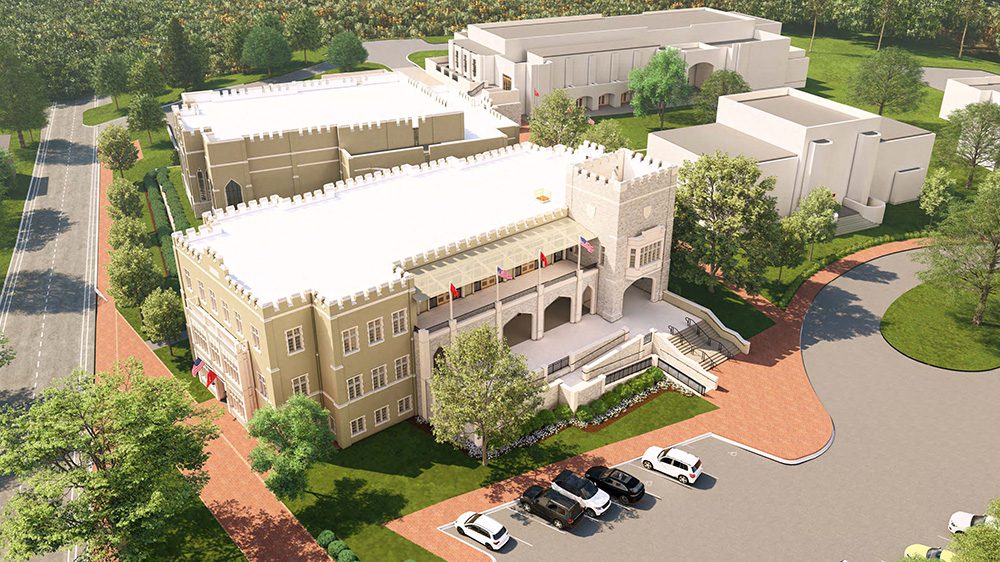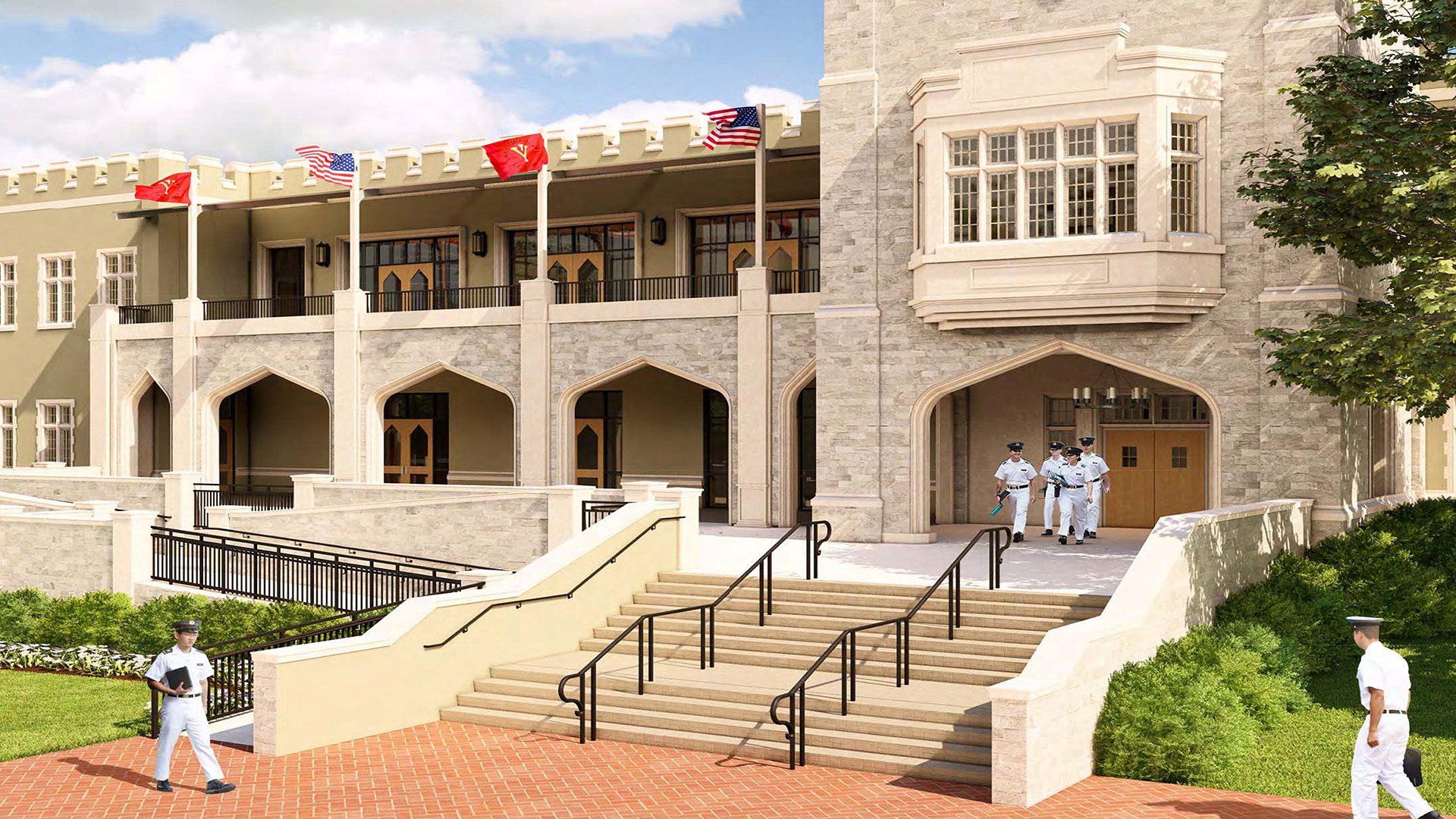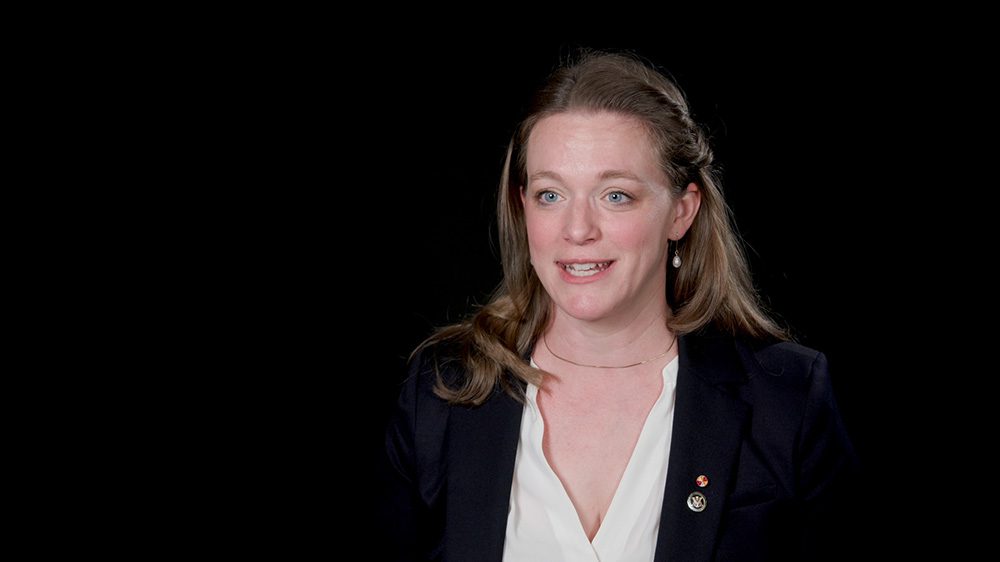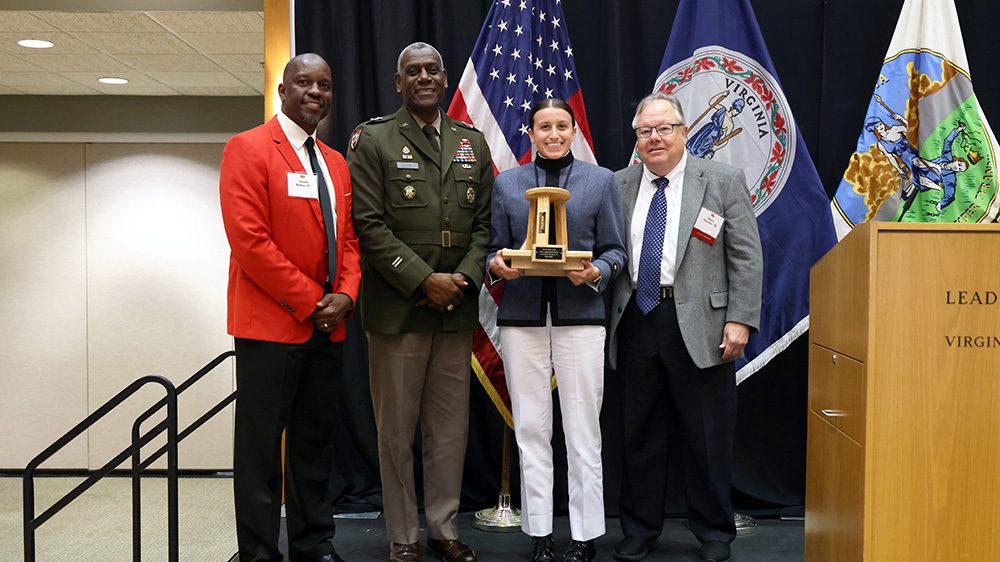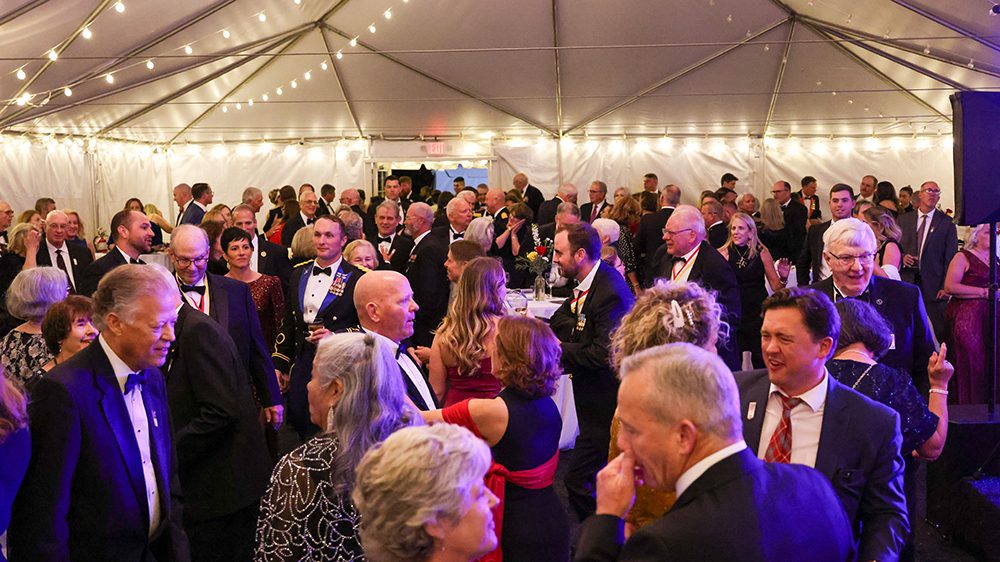In early 2028, VMI’s new center for advancement is tentatively scheduled to open its doors to the VMI family and will include an alumni center. Located between the corner of VMI Parade and Letcher Avenue and Letcher Avenue and Maiden Lane, it will be a three-level, 50,000-square-foot facility serving the entire Institute family and providing top-flight facilities for a wide variety of events.
The idea for the new building was hatched several years ago, as it became evident that a growing alumni base and the increasing demands to support on-post activities meant the current infrastructure needed a major upgrade. The Agencies and VMI considered various options, including a renovation of Moody Hall, but none of them offered a workable solution. The decision, therefore, was made to replace the current structures with a single structure to support the important missions of both the Institute and the VMI Alumni Agencies: Academics, engagement, and philanthropy.
The “footprint” of the building requires the demolition of Moody Hall and the two other buildings between Maiden Lane and VMI Parade—the Cabell House, currently used by the athletic director, and Neikirk Hall, which has housed the VMI Alumni Agencies, VMI Foundation, and VMI Keydet Club offices since the late 1990s.
While the disappearance of familiar buildings can be bittersweet, it has frequently happened on post. “One example of ‘lost’ VMI architecture would be the first purpose-built academic building at VMI—F.H. Smith Hall, which stood at the site of the current northwest wall of Old Barracks,” said Col. Keith Gibson ’77, VMI Museum System executive director. “Built in 1900, it was very convenient for cadet access for classes, but it obstructed the original Alexander J. Davis plan to complete the quadrangle of Old Barracks. With the completion of Smith-Shipp Hall (now known as Scott Shipp Hall) in 1918, F.H. Smith Hall was destined for the wrecking ball, which came about in 1924.”
Under the current schedule, which is subject to change, the Agencies’ staff members and equipment will move out next summer. Construction on the new facility will begin in winter 2025 and take approximately 2 years to complete. After VMI secures the necessary occupancy permit, those working in the new facility will begin to move into their offices. If all goes well, the process will be completed in spring 2028 at a projected cost of approximately $68 million.
The new building will be highly capable—and multipurpose. Brig. Gen. Dallas Clark ’99, deputy superintendent for finance and support, who is responsible for the project’s planning and execution, said, “The center will be particularly special, as it is meant to serve the entire VMI family. Cadets and faculty will use it for classrooms and symposia, and the VMI Alumni Agencies will utilize it to host events, reunions, chapter meetings, scholarship banquets, and board meetings. The Institute will use it for meetings, VIP visits, and conferences, and the community will have opportunities to host milestone events. Every aspect of the VMI experience will be positively affected by this building, and everyone in the VMI family will benefit from it.”
Besides the space necessary for the VMI Alumni Agencies’ operations, it will have the facilities to host social functions, including a kitchen, two bar areas, an executive dining and conference room, and an 8,927-square-foot ballroom/conference room. The design also includes activities rooms, classrooms, additional conference rooms, and training and seminar rooms, as well as a guest room for visiting VIPs.
